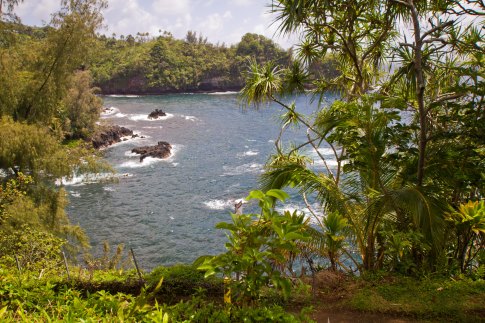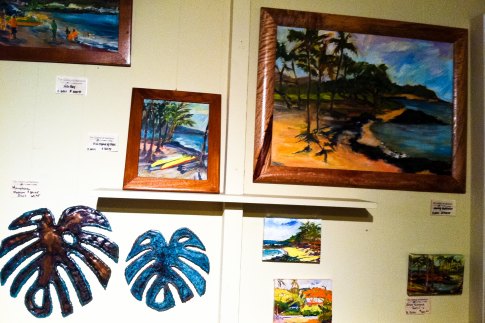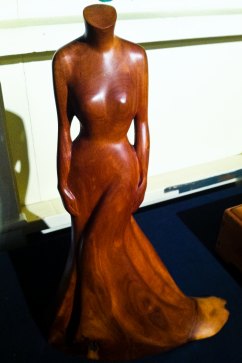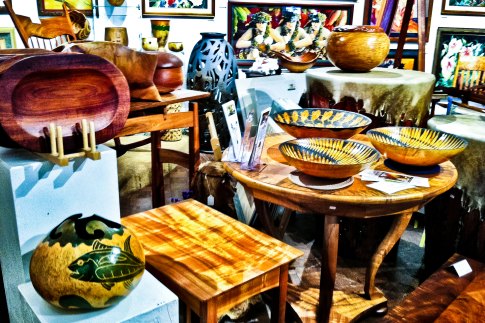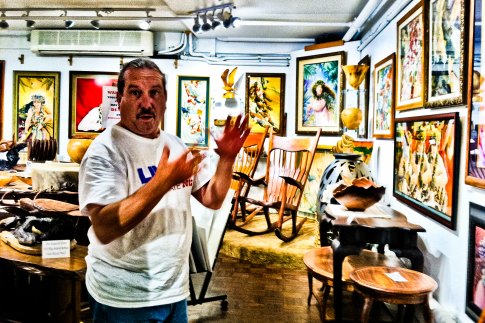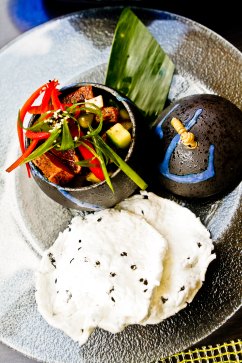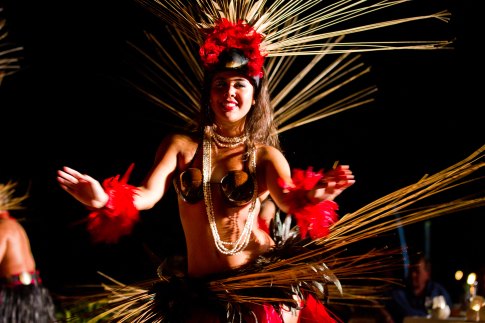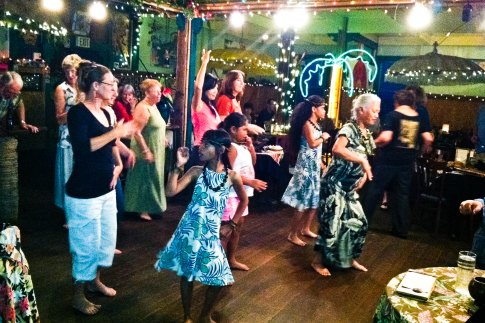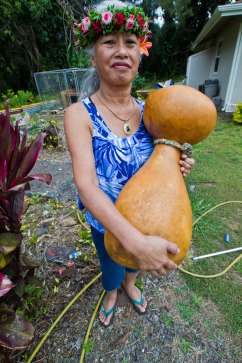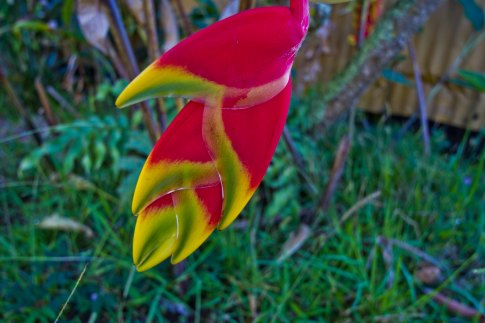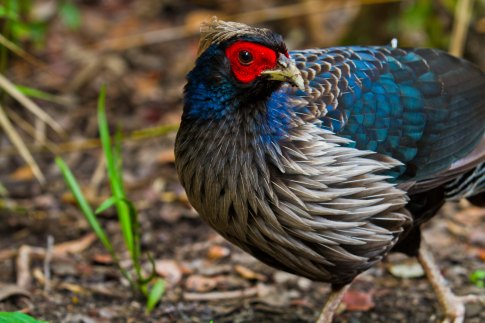 I’ve settled back into ‘mainland’ life following a jaunt to two islands in Hawaii: Maui and the Big Island of Hawaii, the latter a new experience and one I had been longing to visit for sometime.
I’ve settled back into ‘mainland’ life following a jaunt to two islands in Hawaii: Maui and the Big Island of Hawaii, the latter a new experience and one I had been longing to visit for sometime.
While there was more than enough inspiration to write about my experience, I struggle with the ‘right’ words on this chilly San Francisco afternoon yet colorful visions and magical moments of my time there flood my head.
Writers will understand this challenge – isn’t it so often the case that inspiration and your best insights come at the oddest of times, when you don’t have a pen at hand or a laptop nearby? In the shower, in a car, on a mountain walk, in bed at 3 am.
On my most recent trip, the words seemed to flow to me towards the end of the day while I was driving to a dinner or coming home from one. The thing about Hawaii that those who have been or spent time living an ‘island life’ will know, is that places shut down early and people shut down along with them. I’m a night owl — always have been — and yet as the sun began to set and my day was coming to a close, the last thing I wanted to do was plug into a wireless device and write.
Truth be told, every day, I checked email and processed photos but there was something about knowing that the ocean was within feet of my room or hearing the vivid sounds of birds and frogs outside my window, that forced me to unplug.
And so, I didn’t write in Hawaii. Sure, I took notes and shot nearly 5,000 photos, but I spent a lot of time listening to the sounds of nature and looking at the texture of the plants and vegetation around me. I spent time talking to transplants and locals, trying to slow down to the tune of their life, which was so much quieter and peaceful than my own.
When you travel to the American south, or villages in remote parts of the world, the pace is slower and we’ve all experienced some aspect of that jolt when coming from a city, yet Hawaii has a different kind of pulse. Things close early and it’s slower, but people’s energy isn’t necessarily so; their priorities are more focused on the magic of Hawaii by morning and day than it is Hawaii by night. I spent a few days thinking about what it was that made the place unique and btw, this applied to both islands despite the fact that Maui is more commercial than the Big Island.
Like many island communities, people are very family and community oriented and Hawaii is not unique in this case. In many ways, I felt that it was holding onto some of the special remnants that made America so connected fifty years ago. Kids are still seen playing in random places not close to their homes, riding their bikes or walking on major roads and people still hitchhike. Whenever I asked for directions, people who had lived there for twenty years referred to the road by name and didn’t have a clue what the route number was. Is that Route 19 I’d ask? “Don’t know, it’s the blah blah road,” they’d say. This consistently happened north to south, east to west, whenever I got lost, which was often.
Even though there aren’t that many roads that enter and exit the towns, there aren’t a lot of signs or lights. And, the resorts and hotels often don’t have signs at the end of their road and sometimes not even on the property itself. This occurred about a half a dozen times before I learned that I needed to ask for ‘stronger visual landmarks,’ like taking a right at the second bush past the church or 10 feet past the white washed fence. Since you’re legally not allowed to look at your phone while driving, you can’t use your phone as your mobile GPS like so many of us do when we travel.
There were so many places I wanted to stop along the way that I didn’t have time for, largely to hang out in a community, sample their food, hear their stories and just pause for a moment or two to listen to the birds. I remember my first trip to Hawaii over twenty years ago when I was young. We went to Oahu en route to New Zealand and stayed in a hostel of some sort about 30 minutes or so outside Honolulu. Not unlike the vivid life that you feel breathing and pulsating around you in tropical Southeast Asia, I was woken up early (pleasantly so) by the sound of birds outside my window. I remember rolling over and seeing a bright greenish blue bird looking at me with red feathers on his head and thinking, “wow, all that sound comes from something that small?” And, all the birds are so stunning, not just the rarer endangered ones, such as this I’iwi below.
The thing that I had to remind myself as I was experiencing the world of tropical birds by day, frogs at night, roosters at random times and other insects that you’d come across on a hike or on your hotel patio, is that its not Southeast Asia, the South American Amazon or Southern Africa – it’s the states.
Like Alaska, Hawaii has a host of unique qualities about it not found on the mainland, including vegetation, live volcanos and of course natives who have lived here for generations. 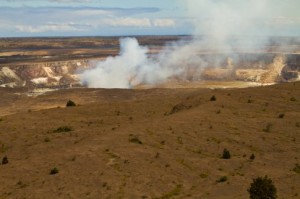
The magic of Hawaii outside the magic we all think of about the place (the stunning beaches, food and natural beauty) centers around the Pulse of the place (aka how people think about the world and as a result, how they live their lives), the People (they’re open to embracing that pulse, not fighting it, so go with the flow of the universe), and the Culture.
The pulse is what brings mainlanders over to live. While this means a shift in lifestyle and being more unplugged in more ways than one, it’s what drives people to set up shop here and make a new life. Since so much of the economy depends on tourism, you don’t see a lot of technology start-ups, brick and mortar companies or big brands setting up shop there.
Who you do see and meet is: tour company owners, chefs, resort and spa managers, massage therapists, holistic thinkers and workers, writers, authors, artists, doctors, nature lovers and environmentalists. These are the people who walk the soil and drive the roads of Hawaii and make up its core. It’s not uncommon to find a place holding yoga classes or a healing center alongside the road.
These people, native or not, care about organic living, sustainability, creating a thriving community for children, healthy food and nature. They also care about Culture and Art is embraced in nearly every town and city. I saw this on Kauai and Oahu too. I came across a number of great galleries and artists and if my house was twice the size and my pocketbook was larger, there’s no doubt, I would have come home with a painting or two.
Aside from paintings, craftsmen are in abundance on every island. Na hana Noeau means “wise and skillful works” and represents works of ancient Hawaiian Art that were also meant to be functional as well as beautiful. Bowls are made from a variety of wood as well as bamboo. Kapa is a fine material created by beating the wood of the Wauke (Paper Mulberry) plant and then bamboo stamps are often used with its own natural dye to create intricate repetitive patterns over the material.
Renowned kapa artist Puanani Van Dorpe continues to practice this amazing craft today, beating kapa to replicate designs of old for eight or more hours a day. Lauhala (hala leaves) are still used today for creation of many products from bowls to hats to floor mats. The leaves are dried and stripped and soaked to create a texture that is intricately woven into a desired shape. Below Kamuela-based Harbor Gallery owner Gunner Mench shows me around and tells me stories, noting that they have one of the largest collections of art around. (their collection includes crafts, furniture, bowls, trinkets, utensils, paintings and more).
Another example of Hana Noeau can be found in the amazing featherwork capes created for high-ranking Hawaiian chiefs. The brightly-colored feathers of indigenous birds (many now extinct) were woven together to create impressive capes that indicated rank and status. Another interesting tidbit worth sharing is that the King of the Hawaiian forest trees, the Acacia Koa, was used in ancient times to build anything from giant seafaring canoes to small bowls.
It took me nearly a week to connect with some native Hawaiians; by native, I mean fourth and fifth generation Hawaiians. Many people informed me that there are very few ‘native native’ Hawaiians left since it has become such a melting pot of cultures from the mid-Pacific.
The Fairmont‘s new restaurant Ko in Maui is themed after this very thing: since most of the chefs are from neighboring countries and islands, they decided to bring in the best of Japan, the Philippines, Korea, Malaysia and other areas to highlight what they knew best, from their mothers and grandmother’s recipes that have been passed on generation-to-generation. See my write-up on Ko.
The Big Island boasts many restaurants that use local farmers and organic food in their dishes, such as The Manu Lani Beach Club’s Napua, the very local and authentic Bamboo’s in Hawi and of course the Four Seasons restaurants along the coast. (the food is to die for).
While culture may be a mishmash of Pacific islands and countries, the phrases “aloha” and “mahalo” are heard from everyone on any given day. Using it is a reminder to locals and visitors that you’re not in Kansas or New York and that Hawaii does have its own unique language, culture and heritage. Think of Aloha and Mahalo as a way to pay tribute to an expressive language that continues to unite Hawaiians with their land and their people.
Historical Sites worth visiting that can take you deeper into Hawaii’s culture and heritage include: Iolani Palace, the former residence of royalty, Kawaihao Church, worship house of Hawaii’s rulers, Washington Place, home of Queen Liliuokalanim, and the Hawaii State Library in Honolulu which has a large section devoted to Hawaiian and Pacific studies.
There are the most common cultural traditions that most people know about, such as the Luau, where you eat massive amounts of food over Hawaiian music — a combination of ukulele music and singing.
Shot to the right was taken at a less traditional luau called Feast at Lele — see my write-up). It included dances from other Pacific islands, not just Hawaii.
You can’t have a luau without a whole lotta dancing, specifically Hula, which can be seen in more of its ancient form today as well as ‘mash-ups’ of hula which have woven in modern influences of dance.
“Hula is the language of the heart and therefore the heartbeat of the Hawaiian people,” said King Kalakaua. Hula tells a story through chant, gesture and movement.
The dance is performed to honor a god or goddess, to exalt the accomplishments of a warrior, or celebrate the beauty of the land, hula is an ancient tradition developed in the Hawaiian Islands by original Polynesian settlers. (below is a Hula class I took at Bamboos in the north of the Big Island – the quality is very poor since it was dark and shot on an iPhone).
When you see a woman dancing hula in its truest form, you’ll notice that she is absorbed by something bigger than herself, off in a faraway place. Hula’s origins within the realm of aumakua (ancestors) involve Laka, the goddess of the hula and are steeped in legend. Hula is not frivolous movement; every motion has a purpose and intricate meaning. While the dance is often performed to slow Hawaiian songs, there’s an intention about it that is so incredibly authentic and beautiful that you’ll quickly be taken to a place of serenity. In ancient times, it was used to convey religious messages and was accompanied by ritual and prayer.
Hawaii hosts hula competitions, such as the Merrie Monarch Festival on Hawaii, the Big Island, which is held every spring and considered by many to be the Olympics of hula. Here’s a great list of other festivals which include hula on the Big Island: Art and Traditions of Hula at Kilauea, He Halia Aloha No Ka Queen Liliuokalani Festival, Moku o Keawe International Hula Festival,
Na Mea Hawaii Hula Kahiko, and the Puuhonua o Honaunau Cultural Festival.
Children and adults learn hula in schools called halaus and some have their own gurus they study under, who have a mission to keep the art of ancient hula alive. Below is a shot I took of Hope, a woman dedicated to doing just that.
See my piece on Hope where you can learn more about her world and what she and her community are doing to keep hula sacred and flourishing.
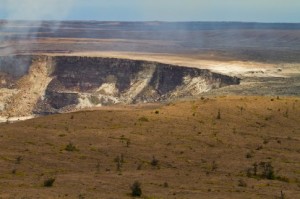 Speaking of sacred, you quickly learn that locals consider their land sacred in a way that perhaps we have forgotten on the mainland. Did I mention the over-the-top fresh flowers that seem to be blooming everywhere even out of the lava on the Big Island? (see my photos, nature & flowers write-up).
Speaking of sacred, you quickly learn that locals consider their land sacred in a way that perhaps we have forgotten on the mainland. Did I mention the over-the-top fresh flowers that seem to be blooming everywhere even out of the lava on the Big Island? (see my photos, nature & flowers write-up).
The concept of malama aina, or respect/caring for the land extends beyond my pals at the Hawai’i Volcanoes National Park who have dedicated their lives to the ‘land.’
The ancient Hawaiians believed that land was not property to be owned, but a gift from the gods that was to be shared to the benefit of all.
When I learned that people lost their land they owned when it was washed away, I was told that they accepted this as something that the gods wanted and it was theirs to take.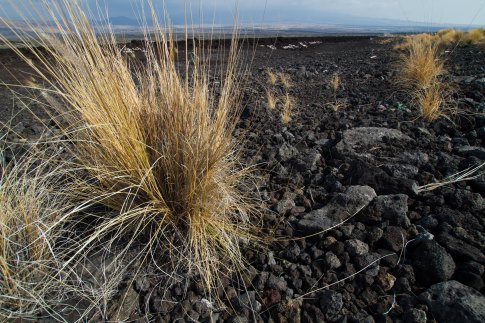
If you have a belief that your land is not owned, but a gift to be cherished, then you think about tragedy differently as you think about caring for the land around you, not just your own.
This of course extends to the food grown on the land as well. Originally known for coffee, sugar and pineapple plantations, they remain in abundance today.
Pineapple is something you’ll find on nearly every breakfast plate and often served in drinks and as a snack. At the incredible World Botanical Gardens, they had ‘white’ pineapple growing, which is rarer than what we can find at the local supermarket around the world.
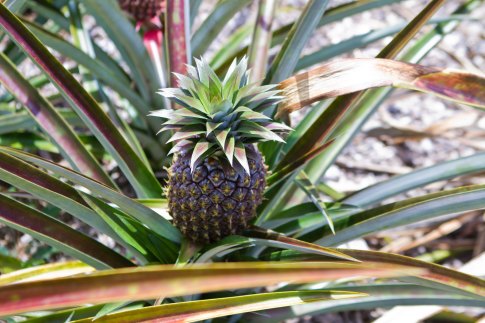 Lanai, which I haven’t been to yet, under the leadership of James Dole, became known as the “Pineapple Island,” after becoming the world’s leading exporter of pineapple.
Lanai, which I haven’t been to yet, under the leadership of James Dole, became known as the “Pineapple Island,” after becoming the world’s leading exporter of pineapple. 
Fresh fruits and vegetables grow in abundance on all the islands, and even the resorts, retreat centers, B&Bs and smaller hotels have gardens and fruit trees on their property.
The beauty and sacredness shows up in its purest form, even when you’re starring at trees from a hammock on a resort. To the right is the view outside my room at the Four Seasons Hualalai (taken on an iPhone so the quality isn’t great).
See my write up on the Four Seasons and my review of its restaurant Beach Tree. If you want to try the condo route btw, Makena Surf on Maui is a great option, The Fairmont in Maui, a larger property great for families and for quieter ‘retreat’ energy, try Lumeria in Maui and Hawaii Island Retreat on the Big Island. For an incredible B&B experience, try the Shipman House in Hilo.
Below is a shot of one of the dishes they spoiled me with during my stay. (love love love the staff here).
So, while today may have been a day I felt more at loss for words, its impossible for words not to flow in some way, shape or form when you reflect on your experiences in Hawaii. It’s a place of wonder, pure beauty, ancient wisdom, culture, fabulous food and people, and oh, oh, those birds. Those joyous tropical birds. I’ll leave you with a photo of one I spent over an hour chasing around on a hike inside the Hawai’i Volcanoes National Park.
Sometimes the best friends you make in special sacred places like Hawaii may be the ones who say absolutely nothing at all.
Photo Credits: Endangered bird Alternative Hawaii / Travel w/a Challenge. All Other Photos by Renee Blodgett.
For more posts on Hawaii, check out this section. To experience nature, botanical gardens and rainforest by segway, check out this post. For photos on the Hawaii Volcanoes National Park. For more on Hawaii and food/wine only, go here. For Hawaii and lodging, here. For more on Hawaii and arts, go here. For horseback riding and the eclectic energy around Cowboys of Hawaii, check out this fabulous post with great photos of Parker Ranch.

Renee Blodgett is the founder of We Blog the World. The site combines the magic of an online culture and travel magazine with a global blog network and has contributors from every continent in the world. Having lived in 10 countries and explored nearly 80, she is an avid traveler, and a lover, observer and participant in cultural diversity.
She is also the CEO and founder of Magic Sauce Media, a new media services consultancy focused on viral marketing, social media, branding, events and PR. For over 20 years, she has helped companies from 12 countries get traction in the market. Known for her global and organic approach to product and corporate launches, Renee practices what she pitches and as an active user of social media, she helps clients navigate digital waters from around the world. Renee has been blogging for over 16 years and regularly writes on her personal blog Down the Avenue, Huffington Post, BlogHer, We Blog the World and other sites. She was ranked #12 Social Media Influencer by Forbes Magazine and is listed as a new media influencer and game changer on various sites and books on the new media revolution. In 2013, she was listed as the 6th most influential woman in social media by Forbes Magazine on a Top 20 List.
Her passion for art, storytelling and photography led to the launch of Magic Sauce Photography, which is a visual extension of her writing, the result of which has led to producing six photo books: Galapagos Islands, London, South Africa, Rome, Urbanization and Ecuador.
Renee is also the co-founder of Traveling Geeks, an initiative that brings entrepreneurs, thought leaders, bloggers, creators, curators and influencers to other countries to share and learn from peers, governments, corporations, and the general public in order to educate, share, evaluate, and promote innovative technologies.

